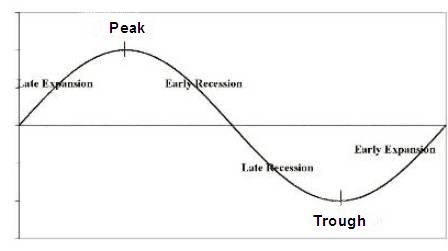The Natural Rate of Unemployment is said to be "natural" because it is the expected unemployment rate in the long-run. When an economy has an unemployment level equal to the the natural rate of unemployment, they are said to be at long-run equilibrium. If the unemployment rate is higher than this (meaning the employment rate is lower), the economy is in a recession; if the unemployment is lower than the Natural Rate (meaning that the employment rate is higher), the economy is in an expansion. Essentially what this means is that there is an average number of people who can always be expected to be unemployed. When the current unemployment is equal to the natural rate of unemployment, it is considered full employment. The average natural rate of unemployment in the United States is near 5%.
The idea behind the natural rate hypothesis put forward by Milton Friedman was that any given labor market structure must involve a certain amount of unemployment, including fritional unemployment associated with individuals changing jobs and possibly classical unemployment arising from real wages being held above the market-clearing level by minimum wage laws, trade unions or other labour market institutions. Unexpected inflation might allow unemployment to fall below the natural rate by temporarily depressing real wages, but this effect would dissipate once expectations about inflation were corrected. Only with continuously accelerating inflation could rates of unemployment below the natural rate be maintained.
The analysis supporting the natural rate hypothesis was controversial, and empirical evidence suggested that the natural rate varied over time in ways that could not easily be explained by changes in labor market structures. As a result the "natural rate" terminology was largely supplanted by that of the NAIRU, which referred to a rate of unemployment below which inflation would accelerate, but did not imply a commitment to any particular theoretical explanation, or a prediction that the rate would be stable over time.
In the business cycle peaks are good and troughs bad. There are various governmental policies to narrow the cycle, to reduce the harshness of recessions. You can see this in the Business Cycle below:
Natural Rate of Unemployment
Using monetary and fiscal policies can help an economy regulate how long they last in a recession or expansion, but does not always have the desired effect. See the sections on Keynesian and Neoclassical theories of Macroeconomics.
Natural Unemployment is the combination of frictional and structural unemployment that persists in an expanding economy when labor and resource markets are in equilibrium. It exists when the economy is at full employment, which is defined as the condition in which the quantity of resources demanded is equal to the quantity of resources supplied.
